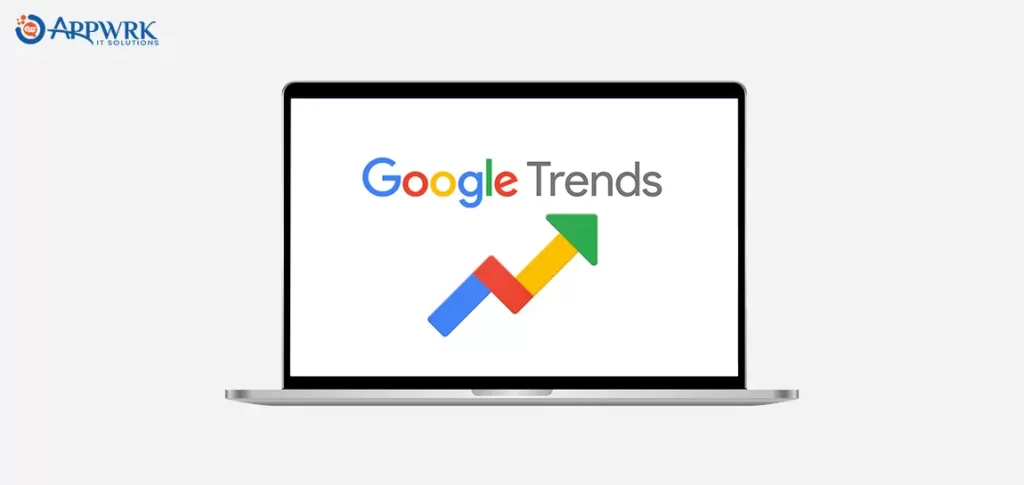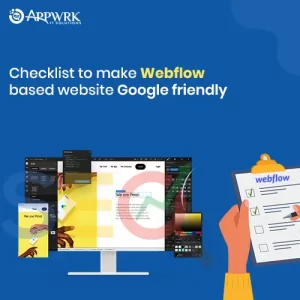Webflow SEO Checklist to Make Google-Friendly Websites
On the modern web, having Google-friendly Webflow websites is only half the battle.
The other half? Getting people to your website. And in many ways, that’s a much harder battle to wage.
After all, nobody’s stopping you from building a website. With tools like Webflow, it’s never been easier to get yourself online in a big, bold, dynamic, and responsive way.
But when it comes to getting people to check out your site, you’ve got some competition. A lot of competition. Depending on the topics you create content about, you could be entering a veritable content war — a war with thousands of other opponents.
To survive — and ideally win — that war, you’ll need to think about how to create Google-friendly Webflow websites or how to optimize your website for search engines (i.e., how to do SEO).
But the first and most important thing to remember is that you should never optimize around search engine algorithms — because algorithms are constantly evolving.
You should optimize your website for humans who use search engines.
After all, search engines exist for humans. They’ve been optimized by some of the world’s top engineers to serve human beings the most relevant, helpful content they can find on any given topic. Plus, search engines take sharing statistics and external links into account when ranking pages, so above all else, your content should:
- Clearly and helpful answer people’s questions
- Be “shareable” — i.e., so helpful and/or entertaining that people can’t help but share it
In short, there’s one simple key to SEO: make your content amazing.
That said, there are many things you can do in Webflow to optimize for search that also helps improve the clarity, helpfulness, and shareability of your content so that you can optimize for search engines and humans at the same time.
This article is about the Most Important Webflow SEO Checklist which if followed properly can take your website’s rankings on SERPs to the sky. Let’s start.

Table of contents
- Webflow SEO Checklist Point 1: Design Responsive and Google-Friendly Webflow Websites
- Webflow SEO Checklist Point 2: Research Keywords and Write SERP-in Content
- Webflow SEO Checklist Point 3: Put the Most Important Pages Up Top
- Webflow SEO Checklist Point 4: Subdomain Responsibly
- Webflow SEO Checklist Point 5: Optimize URLs, Meta Titles, and Descriptions
- Webflow SEO Checklist Point 6: 301 Redirect for the Win
- Webflow SEO Checklist Point 7: Make it Canonical
- Webflow SEO Checklist Point 8: Work that (Auto-Generated) Sitemap
- Webflow SEO Checklist Point 9: Build a Helpful 404 Page
- Webflow SEO Checklist Point 10: Alt Tag All the Images
- Webflow SEO Checklist Point 11: Fire Up Your Robots(.txt)
- Webflow SEO Checklist Point 12: Disable Indexing of Your Webflow.io Subdomain
- Webflow SEO Checklist Point 13: Set up Your Google Analytics!
- Webflow SEO Checklist Point 14: Driving Organic Visitors to Your Blog Posts
- Webflow SEO Checklist: Conclusion
Webflow SEO Checklist Point 1: Design Responsive and Google-Friendly Webflow Websites
There is no shortage of smart devices in the market. Smartphones, smartwatches, and tablets are becoming very common.
But what if the user has to pinch to zoom in to see content and images on your website? A very bad user experience. Here, responsive design matters a lot.
Google gives higher importance to Google-friendly Webflow websites that adjust well with every screen size. Above all, Webflow provides tools to make your website responsive.
For this, cascade down your Webflow design from desktop view to tablet view and other smaller screens.
In Webflow canvas, you can change the HTML pieces and CSS attributes like font, color, and background. Lastly, check out the website navigation menu and spacing.
Webflow SEO Checklist Point 2: Research Keywords and Write SERP-in Content
Hundreds of websites launch every day. How do Google crawlers match SERP with user queries? With a magic trick: algorithms that look for keywords.
Let’s find out how to research suitable keywords and develop Google-friendly Webflow websites :
Use Google’s search suggestions
When you put certain words in a Google search, search suggestions appear automatically. For example, type Webflow and Google shows hosting, eCommerce, and pricing along with this. That means users are already searching for these keywords and make their list.

Use Google Trends
Tapping into trending keywords in the market improves the positioning of your website on Google SERP. For this, the Google trends tool is very handy.
You can divide keyword research as per trend variations by:
- Location: It will help you conduct local SEO and optimize the Webflow website locally.
- Time Period: It reveals seasonal trends and saves you from the trap of momentarily popular keywords.
- Category and type: It will assist you in knowing different topics trending in your niche and industry.
Besides this, Google trends show you relevant queries to beat the competition.’

Use Google AdWords’ Keyword Planner
Google keyword planner is a powerful and free SEO tool for identifying new keywords. Also, it tells you keywords’ cost estimates to make out their present value in the market.
When you put business category, these are the parameters to find keywords for Google-Friendly Webflow websites:
- Google search volume: How many people are looking for these keywords in a month?
- Keywords difficulty: Keywords with less score have less competition and will get you, customers, in the short term. But, the higher difficulty keywords will sustain for a long.
- Organize keywords: Tells you keywords that match with the related terms.
Now start writing that SERP-in content!
As we have found appropriate keywords, it is time to create SERP-in content. For that, write natural content that makes sense to humans. Further, LSI keywords and synonyms best describe what you want to convey.
And for Google algorithms:
- Use keywords in the places like meta descriptions, heading tags, etc.
- Place the keyword in the first 200 words.
- Add essential keywords initially in the content.
Webflow SEO Checklist Point 3: Put the Most Important Pages Up Top
In the navigation top menu, keep the vital business pages.
With this, search engines and users will know that these are crucial pages.
Users can easily find them; also, search engines can locate and crawl them without any trouble.
It is best to make website categories and add them to the header. Further, assign a maximum of two subcategories; otherwise, it will appear clumsy.
Webflow SEO Checklist Point 4: Subdomain Responsibly
Subdomains can make a difference to your Webflow site considerably.
Webflow allows you to create a custom subdomain for international markets without purchasing a new domain. For example, “us.example.com.”
It is important to note that the content must be original in different subdomains. Otherwise, Google can’t assess which page to rank higher and may penalize your site for duplicate content.
Webflow SEO Checklist Point 5: Optimize URLs, Meta Titles, and Descriptions
Do you want to know the secret sauce to make Google-Friendly Webflow websites? It is working on your URLs, meta titles, and meta descriptions.
Optimizing these parameters ensures that users click on your website rather than the other ten sites on SERPs.
In meta description, keep the length between 155-160 words. You can target the pain points of the users. Also, add a call to action for users to know what they will expect by clicking on the link.
URL is the most ignored part but counts a lot. Random URLs are more difficult to understand than specific ones that are easily sharable. Add page titles at the end of the domain but in short form.
Meta titles don’t appear on the web page but on the SERPs. Create it smartly by:
- Add primary keywords.
- Keep its length 50-60 characters; otherwise, additional words will get omitted.
Webflow SEO Checklist Point 6: 301 Redirect for the Win
Next, you can’t miss out on 301 redirects. Sometimes a web page can become obsolete. But, if users keep hanging on removed pages, it gives the worst user experience.
To make sure it doesn’t happen, assign 301 redirects to the relevant links. When viewers come from other websites and social media, they’ll land on a credible link.
Webflow SEO Checklist Point 7: Make it Canonical
Duplicate content can play havoc with your Webflow site SEO. Canonical tags act as a savior by preventing the same content from appearing in the same category.
For example, shirts and pants belong to the clothes category. Sometimes Google can pick Shirt’s content for Pant’s as they have same category. Canonical tags save such scenarios.
Webflow SEO Checklist Point 8: Work that (Auto-Generated) Sitemap
The sitemap is necessary for Google to know that these links exist on your Webflow website. Also, it shows relationships between different pages.
Creating a sitemap is super easy with Webflow. Allow auto-generated sitemap, and new pages will get updated on the Google search console.
Webflow SEO Checklist Point 9: Build a Helpful 404 Page
Have you seen the 404 error: page doesn’t exist? It is horrible to have blank and boring 404 error pages. But, it is always possible to build a helpful 404 page:
- Put useful messages like “lost your way, explore more and heading towards home page” and link towards the home page.
- Create likable characters and graphics before users can get on to other Webflow pages.
- Elaborate on your brand message.
Webflow SEO Checklist Point 10: Alt Tag All the Images
How will Google know what an image signifies? It is with an image alt tag.
People prefer image searches for items that appeal to them visually. Also, Google shows an image carousel for certain searches.
Here, the alt tag can make all the difference. It signifies what an image wants to convey. Further, Google ranks images with alt tags higher as visually impaired people can listen to them.
Webflow SEO Checklist Point 11: Fire Up Your Robots(.txt)
Robots.txt file is a significant step to keep Google and other search engines to crawl less important pages.
With the Robots.txt file, you increase the relevance of high-priority pages.
For example, the login/registration pages are important for users but not for Google. Also, it prevents the indexing of duplicate pages.
Sometimes there are files and directories that you don’t wish web users and search engines to visit. You can block them with a Robots.txt file and enhance your Webflow SEO appreciably.
Webflow SEO Checklist Point 12: Disable Indexing of Your Webflow.io Subdomain
You get the webflow.io subdomain with the Starter plan.
For enhancing brand reputation, opting for a custom domain becomes more than necessary.
Afterward, if you don’t disable the webflow.io subdomain, it won’t serve the purpose.
So, disable indexing of your webflow.io subdomain, and this way you will be one step closer to Google-Friendly Webflow websites.
Webflow SEO Checklist Point 13: Set up Your Google Analytics!
Indeed, Google Analytics is an awesome marketing tool. Enabling this tool on your Webflow has many unmentioned benefits.
You can amplify your marketing efforts to the next level:
- Track user demographics and interests and create pages accordingly
- Know highest converting web pages and focus on enhancing their internal linking.
- See visitor bounce rates and improve the parameters of those pages.
Webflow SEO Checklist Point 14: Driving Organic Visitors to Your Blog Posts
You have done almost everything. But if you miss this last step, doing all the above steps loses its meaning. It is by attracting organic visitors to your website with valuable content in blog posts.
1. Relevance
Create blog posts on your Webflow website correlating with others in your niche and industry.
Relevant blog posts indicate to Google that you’re giving your opinions resonating with what the audience expects.
2. Authority
If you can prove yourself as a thought leader and experienced contender, Google considers your site to be authoritative.
Are you touching the pain points of your users from different angles?
It makes users and industry experts come to your Webflow website for reliable information again and again.
3. Stickiness
There is a difference between writing random blogs and the ones that make readers stick to them.
Readers spending more time on your Webflow website indicates a clear-cut page’s strength to Google. Tips to make it sticky:
- Use simple words that the general public can understand.
- Cover hierarchical information with the most important at the beginning.
- Unexplored and interesting angles evoke readers rather than generic topics.
Webflow SEO Checklist: Conclusion
After all, the key to Google-friendly Webflow websites is publishing the right content—and thus optimizing your site for search—knowing what your users want. It’s just like they used to say on GI Joe:
Knowing is half the battle.
And now that you know, you can head into the content battle, well-armed and ready to win.
Hire Webflow Developers on-demand for Every Need!
Related Links:
- What is Webflow?
- How Much Does It Cost To Build a Webflow Website?
- How Many Days Will It Take to Build a Webflow Website?
- How to Integrate Shopify with Webflow?
- How to Integrate Mailchimp with Webflow?
- How to Convert Figma to Webflow Step by Step?
- How to Migrate WordPress Websites to Webflow?
- How To Build a Webflow Website?
- Top 10 Things to Consider for Webflow Website Development
About The Author









 Free Quote
Free Quote
















































